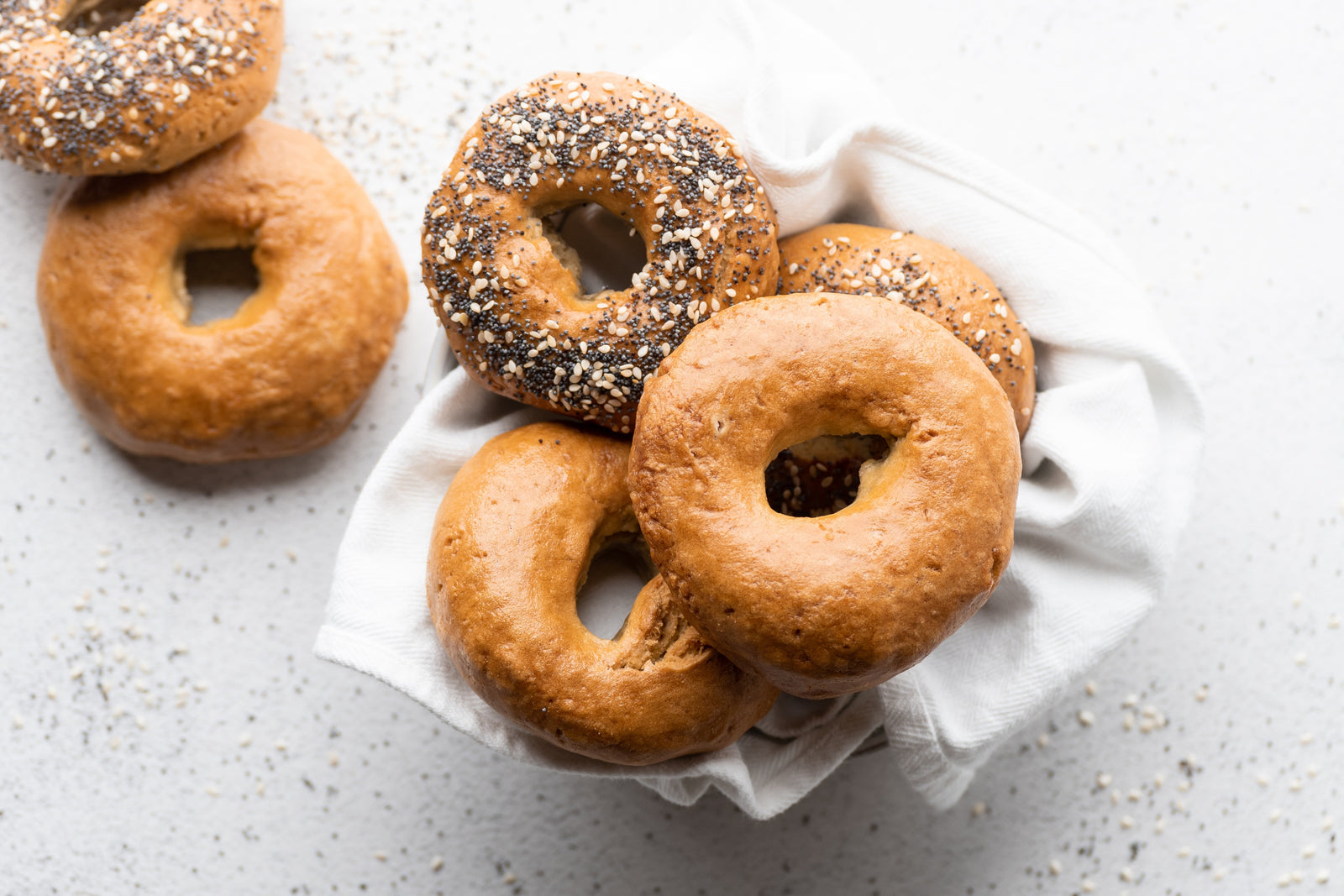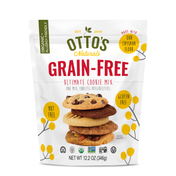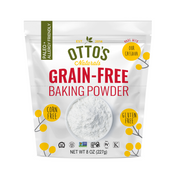Grain-Free Easy Bagels
Grain-Free, Gluten-Free, Nut-Free, Dairy-Free
Though untraditional, these grain-free bagels are a perfect addition to your breakfast or lunchtime rotation. With Otto's Naturals Cassava Flour, you can still enjoy the chewy and crisp texture of this freshly-baked bread roll. Schmear some cream cheese or butter on a sliced bagel, or add your favorite proteins and veggies for a delicious & nutritious bagel sandwich!
This recipe is super easy because it requires no specific rising times! It works out because bagels are typically on the denser side, so just let the dough rest as you're getting the water bath ready. Grain-free couldn't get easier!

Ingredients
- 1 Tablespoon maple syrup
- ¼ cup warm water (100-110°F)
- 1 packet active dry yeast (2 ¼ teaspoons)
- 1 cup Otto's Naturals - Cassava Flour
- 1 cup tapioca flour
- 1 teaspoon salt
- ¼ cup olive oil
-
4 eggs, room temperature
Topping:
- 1 Tablespoon poppy seeds
- 1 Tablespoon sesame seeds
-
1 Tablespoon olive oil
Instructions
- Preheat the oven to 400°F. Line a baking sheet with parchment paper.
- In a small bowl, dissolve the maple syrup into the ¼ cup of warm water. Sprinkle the yeast over the water and gently stir it in. Set it aside for 5-20 minutes until the yeast becomes frothy and starts to increase in size.
- Meanwhile, combine the cassava flour, tapioca flour, and salt in a large mixing bowl. Add the olive oil, eggs, and yeast mixture. Stir until everything is combined and the dough is smooth. The dough should seem sticky. Let the dough rest while you prepare the water bath.
- Bring a pot of water to a boil. The pot should hold enough water so that the bagels are completely submerged when they are dropped into the water.
- When the water is close to boiling, start shaping your bagels. The dough should have firmed up by now and be easy to handle. If it still seems a little sticky, use some tapioca flour or cassava flour to coat your hands while you handle the dough.
- Divide the dough into 4 or 6 portions, depending if you want mini or regular size bagels. Take each dough ball and shape it into a flat disk, punch a hole through the center of the disk with your finger or a spoon handle and finish shaping the dough into a bagel.
- One at a time, drop each bagel into the boiling water. Use a spatula to gently release the bagel from the bottom of the pot if necessary. Wait until the bagel floats to the surface and then remove it and place it on the baking sheet. Repeat with the remaining bagels.
- For topping the bagels, brush each bagel with some of the olive oil. Combine the poppy seeds and sesame seeds in a small bowl. Sprinkle the seed mixture over the bagels or leave some of the bagels plain.
- Bake the bagels for 20-25 minutes until they are a deep brown in color. Let them cool completely on the pan before storing them in an airtight container or freezing them.


Where did bagels originate from?
Bagels are originally from Ashkenazi Jewish communities in central Europe, though some other variations have popped up in other cultures as well. Bagels are traditionally made by making a yeast dough, rolling it into a rope, and pinching the ends together to make the O shape. It's then proofed, boiled, covered in seeds and baked until golden-brown. The shape helped with even cooking and easy transportation via a string or dowel.
Fun fact: the boiling step is what gives bagels its iconic chewy exterior! By pre-gelatinizing the crust before baking, it does not become crispy like a baguette or other types of bread. Boiling also prevents excessive rising and provides bagels a denser interior.



